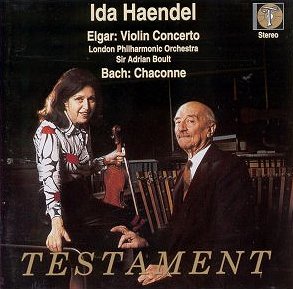 Composer: Camille Saint-Saëns
Composer: Camille Saint-Saëns
Works: Violin Concerto No. 2, La Muse et le Poète, Spartacus Overture
Performers: Jean-Jacques Kantorow (violin), Torleif Thedéen (cello), Tapiola Sinfonietta
Recording: Rec October 1999, April 2000 (Spartacus Overture), Tapiola Concert Hall, Finland
Label: BIS
Saint-Saëns occupies a unique position within the pantheon of French composers, his oeuvre reflecting not only the elegance and sophistication of the Romantic era but also a steadfast commitment to form and clarity. The Violin Concerto No. 2, composed in 1858, stands as a testament to his early mastery of the concerto form, which he would refine throughout his career. Coupled with the later La Muse et le Poète and the overture to Spartacus, this recording offers a fascinating exploration of Saint-Saëns’ evolution as a composer, juxtaposing youthful vigor with mature introspection.
Jean-Jacques Kantorow’s dual role as both violin soloist in the concerto and conductor of the Tapiola Sinfonietta provides a cohesive interpretive lens through which to engage with these works. The Violin Concerto No. 2 opens with a vigorous Allegro, where Kantorow’s command of the rhythmic pulse is palpable. His phrasing is both lyrical and dynamic, navigating the intricate figurations with a deftness that belies the technical demands of the score. Particularly noteworthy is his handling of the transition to the slow movement, where the expressive depth is beautifully articulated. The interplay between soloist and orchestra here reveals Kantorow’s understanding of balance, a hallmark of Saint-Saëns’ concerto writing, which often emphasizes dialogue over mere showcase.
In the slow movement, Kantorow draws out a poignant lyricism, the melodic lines floating effortlessly over the orchestra’s rich harmonic support. The seamless connection to the capricious finale showcases both the technical brilliance and the playful character of the music, affirming the work’s place as a significant yet neglected gem in the violin repertoire. The performance here is not only technically proficient but also imbued with an affectionate understanding of the piece’s spirit.
Contrastingly, La Muse et le Poète, composed half a century later, presents a more complex tapestry of emotions and textures. Kantorow’s collaboration with cellist Torleif Thedéen highlights the work’s lyrical exchanges, yet it is in these moments of dialogue that the piece occasionally falters. While the opening is indeed arresting, the subsequent sections lack the thematic development that one might hope for, leading to a somewhat uneven experience. Nonetheless, the players navigate its challenges with skill, and the orchestral accompaniment remains supportive and well-balanced.
The Spartacus Overture, while less frequently performed, demonstrates Saint-Saëns’ adeptness at orchestration and thematic development. Here, however, the absence of a compelling dramatic arc becomes evident, as the music meanders without the gravitas one might expect from a work meant to accompany a theatrical piece. Kantorow’s conducting keeps the ensemble tight, but the overall effect is pleasing yet inconsequential, lacking the emotional heft that marks his more memorable works.
From a technical perspective, BIS’s recording captures the clarity and detail of the performances, although it does not reach the vibrant color found in their best engineering efforts. The orchestral textures are well-defined, yet the overall sound can feel somewhat subdued, especially in the climaxes of the concerto. This limitation detracts from the full impact of the performances, particularly as the dynamic range of Saint-Saëns’ orchestration is often rich and expansive.
The juxtaposition of these three works provides a compelling insight into Saint-Saëns’ stylistic evolution, yet it also underscores the challenges of presenting lesser-known pieces alongside his more celebrated works. Kantorow’s dedication to illuminating these compositions is commendable, and his performance of the Violin Concerto No. 2 stands out as particularly engaging. Although the recording presents certain shortcomings in sound quality and the emotional depth of the later works, it undeniably contributes to a broader appreciation of Saint-Saëns’ artistry, making it a valuable addition for those seeking to explore the nuances of his chamber and orchestral music.


